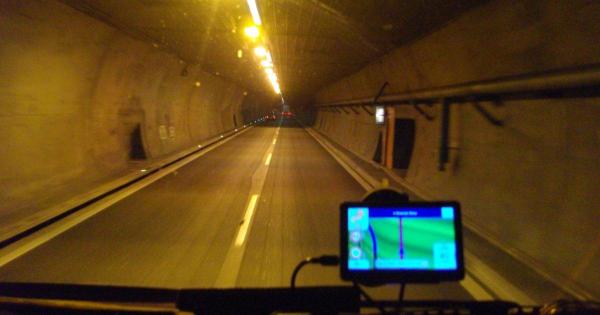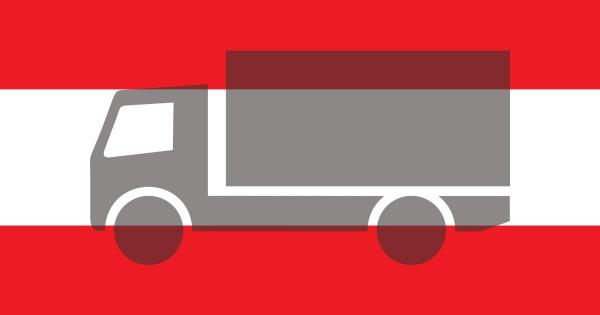
Night Closures of Mont Blanc and Fréjus Tunnels – Disruptions on the France–Italy Route
Drivers planning to travel across the Alps on the France–Italy route should prepare for significant disruptions. In June 2025, night closures and alternating (single-lane) traffic are scheduled in two key Alpine tunnels: Mont Blanc and Fréjus.
Mont Blanc Tunnel
The Mont Blanc Tunnel will be completely closed to traffic during night hours – from 10:00 p.m. to 6:00 a.m. – on the following dates:
❌ June 17, 18, 19, 26, and 30, 2025
❌ Additionally, on June 25, alternating (single-lane) traffic will be in place inside the tunnel, which may cause delays and traffic disruptions.
Fréjus Tunnel
The Fréjus Tunnel will also be subject to restrictions. Complete closures are scheduled for:
❌ June 17 and 18, from 10:00 p.m. to 5:00 a.m.
❌ June 21, from 10:00 p.m. to 2:00 a.m.
❌ Alternating (single-lane) traffic will be in effect on June 19, 20, 23, 24, 25, 26, and 27, from 10:30 p.m. to 5:15 a.m.

Hungary eases truck driving ban for Pentecost – night-time transit allowed
At the request of industry organizations, Hungarian authorities have decided to partially suspend the truck driving ban during night hours in order to ensure uninterrupted deliveries and meet increased demand during the long weekend.
The weekend driving restriction for heavy vehicles would normally apply for 48 consecutive hours during the Pentecost weekend. However, the ban will be partially lifted between 10:00 PM and 6:00 AM the following day to allow overnight transit.
The truck driving ban will apply during the following hours:
❌ Sunday, June 8 – from 6:00 AM to 10:00 PM
❌ Monday, June 9 – from 6:00 AM to 10:00 PM

Austria: Truck traffic ban on Brenner Pass towards Italy on May 28
On Wednesday, May 28, from 7:00 AM to 10:00 PM, a temporary truck traffic ban will be in effect in Austria on one of the main routes from Germany to Italy via the Brenner Pass. The restriction is based on § 42 (3a) of the Austrian Road Traffic Regulations (StVO) and applies in particular to the A13 Brenner Autobahn.
According to this regulation, on May 28 between 7:00 and 22:00, trucks and vehicle combinations with a maximum permissible gross weight exceeding 7.5 tonnes are prohibited from driving. The same applies to trucks with trailers if the total weight also exceeds 7.5 tonnes.

The ban is directional and applies only to southbound traffic towards Italy, if the destination of the journey includes the section of the A13 between the Nößlach and Brenner Nord interchanges, which is the final stretch before the national border.
❌ The ban applies to the following motorways:
◾ A12 Inntal Autobahn,
◾ A13 Brenner Autobahn,
◾ A14 Rheintal/Walgau Autobahn,
provided that the destination includes the section of the A13 from Nößlach to Brenner Nord leading to the Italian border.
In practice, this means the restriction covers all trucks meeting the weight criteria that are traveling from Austria to Italy via the Brenner Pass.
The ban does not apply to:
◾ traffic in the opposite direction (from Italy to Austria),
◾ journeys that do not include the restricted final section of the A13.
This restriction is in force on selected days of the year, including May 28, due to anticipated high traffic volumes and the need to reduce the number of heavy goods vehicles on heavily used sections of the Austrian motorway network.
Exemptions from the ban
The following journeys are exempt from the ban:
Trips carried out exclusively for:
◾ the transport of livestock, postal shipments, newspapers, drinks to tourist areas, deliveries to fuel stations, restaurants or events,
◾ repairs to refrigeration systems, towing services, road assistance, disaster relief, medical care,
◾ vehicles of road maintenance companies or contracted vehicles, road traffic or railway construction,
◾ vehicles of public security services, fire brigades, waste collection, waste disposal, sewage treatment operations,
◾ regular public transport services, amusement rides, or transport for lighting and sound technicians traveling to and from work locations, journeys under § 42 (3a) StVO, as well as transports by trucks or articulated vehicles of Austrian or foreign armed forces present in Austria under the Federal Law Gazette I No. 57/2001, or aid transports by recognized relief organizations.
Transports carried out exclusively to or from civil airports (§ 64 of the Aviation Act) or military airfields used for civil aviation under § 62 (3) of the Aviation Act.
Combined rail-road or water-road freight transport: from the sender to the nearest technically suitable rail loading terminal or from the nearest suitable unloading terminal to the recipient, and return to the next loading location, provided that a fully completed document is carried, proving that the vehicle or its superstructure (e.g. swap body or container) has been or will be transported by rail.
The same applies analogously to combined water-road transport.
§ 42 ust. 3a StVO – Straßenverkehrsordnung

Italy: Additional truck ban on A22 before Austrian border tomorrow
The authorities of the Autonomous Province of Bolzano in Italy have imposed a temporary traffic ban for heavy goods vehicles with a gross vehicle weight of over 7.5 tons on the A22 motorway heading towards the Austrian border.
The restrictions will be in force on the following dates: Thursday, May 29; Monday, June 9; and Thursday, June 19, 2025 – from 00:00 to 22:00. The ban applies to trucks over 7.5 tons traveling on the northern section of the A22 motorway from Vipiteno to the Austrian border. Vehicles already on this section at the start of the ban may stop at the SA.DO.BRE parking area in Vipiteno or other designated parking areas, according to the instructions of the local road police.
The purpose of the ban is to ensure traffic flow and safety on the Brenner motorway during periods of increased traffic due to public holidays in Austria and Germany, where similar restrictions are also in place.
Source: Decree of the Bolzano Chamber of Commerce

Berlin: New Regulations on A100. Drivers Face €500 Fine and License Suspension.
Starting from May 15, 2025, new traffic restrictions apply on the A100 motorway near the Funkturm interchange in Berlin. These changes are the result of infrastructure issues caused by the closure of the Ringbahnbrücke and Westendbrücke bridges.
The restrictions follow the complete closure of the Ringbahn Bridge on March 19 this year. Since March 24, traffic heading towards Hamburg has been limited to a single lane in an emergency configuration. As a result, the ramp connecting the A115 to the A100 towards Hamburg has also been completely closed. The new traffic management system aims to reduce congestion and improve flow on one of the key sections of the German motorway network.
Northbound traffic will be directed through the Rathenauplatz tunnel using three lanes, but with significant restrictions:
❌ The left lane is exclusively for vehicles with a gross vehicle weight (GVW) of up to 3.5 tonnes heading towards the A100 in the direction of Hamburg.
❌ The middle lane leads to the A115 towards Leipzig.
❌ The right lane directs vehicles to the Messedamm junction, and only vehicles over 3.5 tonnes planning to continue towards Hamburg are permitted to use this lane.
WARNING: Trucks over 3.5 tonnes that do not comply with the new regulations may face a fine of €500 and a two-month driving ban.
Additionally, the entrance from the AVUS Nordkurve parking area to the A115 has been closed.

Closed Access to A2 towards Świecko. Detours via DK92 from May 17
Starting May 17, the first phase of pavement renovation will begin at the Poznań Wschód motorway interchange, where the A2 motorway intersects with the S5 expressway from Bydgoszcz. During this stage, access to the A2 motorway will be closed in both the Świecko and Warsaw directions.
As part of the expansion project to add a third traffic lane in each direction on the concession section of the A2 between the Poznań Krzesiny and Poznań Wschód interchanges, Autostrada Wielkopolska SA is moving forward with the pavement resurfacing at the Poznań Wschód interchange. The work involves replacing the surface layer and is planned in phases to minimize disruptions for drivers, ensuring that some traffic can still pass through the interchange. The first phase, focused on the renovation of the on-ramps, will start on May 17.
Detours due to ramp closures:
❌ For drivers from Bydgoszcz/Gniezno and Września heading towards Świecko – follow the detour from the Kostrzyn interchange via national road DK92 through Poznań to the Poznań Krzesiny interchange.

❌ For drivers from Kleszczewo heading towards Świecko – use the detour via the Kostrzyn interchange, DK92, and Poznań.

❌ For drivers from Bydgoszcz/Gniezno heading towards Warsaw – follow the detour from the Kostrzyn interchange via national road DK92 to the Września interchange.

❌ For drivers from Kleszczewo heading towards Warsaw – also follow the detour via the Kostrzyn interchange, DK92, and the Września interchange.

Additionally, traffic traveling west towards Świecko on the A2 main carriageway, between km 180 and km 179, will be shifted to the southbound lanes near the Poznań Wschód interchange. A speed limit of 60 km/h will be enforced in the area where the lanes are merged.
Please drive carefully and pay attention to road signs.

he resurfacing work on the on-ramps at the Poznań Wschód interchange is expected to last approximately two weeks. However, the pace of work and the completion date will largely depend on favorable weather conditions. Poor weather could delay the schedule.

Austria Extends Border Controls with Slovenia and Hungary Until November 2025
In accordance with the amendment to the regulation issued by the Austrian Federal Minister of the Interior, temporary border controls at the borders with the Republic of Slovenia and Hungary have been extended until November 11, 2025.
This is yet another decision to continue control measures at the internal borders of the Schengen Area, which – according to the authorities in Vienna – aims to enhance security and combat illegal migration. The regulation represents a formal amendment to the previously existing legal framework in this area and takes effect immediately.
Carriers and drivers should be prepared for possible document checks when crossing the Austrian borders with Slovenia and Hungary – including on the EU side.

Traffic Disruptions in Hungary Due to the Tour de Hongrie – List of Road Closures and Detours
The Tour de Hongrie 2025 kicks off on May 13, and drivers across Hungary – including in Budapest – should expect temporary road closures and detours due to the cycling race. Check the list below to find out when and where traffic disruptions are expected.
The event will feature 126 participants competing in an 875-kilometer Hungarian race consisting of five main stages. Police and event security will close roads along the route only for the time necessary to avoid significant disruption to drivers.
National Routes:
– Stage 1: (Budapest – Győr, 210 km); May 14, 2025 (Wednesday)
– Stage 2: (Veszprém – Siófok, 178 km); May 15, 2025 (Thursday)
– Stage 3: (Gödöllő – Gyöngyös-Kékestető, 163 km); May 16, 2025 (Friday)
– Stage 4: (Tata – Székesfehérvár, 154 km); May 17, 2025 (Saturday)
– Stage 5: (Etyek – Esztergom, 170 km); May 18, 2025 (Sunday)
Traffic Restrictions in Budapest:
Temporary traffic restrictions are expected in the capital on May 12, 13, and 14, 2025, affecting the following routes:
➡️ St. Gellért Quay – Döbrentei Square – Apród Street – Ybl Miklós Square – Chain Bridge Street – Clark Ádám Square – Chain Bridge – Széchényi István Square – Apáczai Csere János Street – Petőfi Square – 15 March Square – Belgrád Quay – Liberty Bridge – St. Gellért Square;
➡️ Polytechnic Quay – Pázmány Péter Promenade – Dombóvári Road – Budafoki Road – Hunyadi János Road – Main Road No. 6.

Germany Tightens Border Controls – Drivers Should Expect Delays
The new German federal government, following the announcements of Interior Minister Alexander Dobrindt, is introducing even stricter controls at national borders, including crossings with Poland, the Czech Republic, Austria, and many other neighboring countries. These measures aim to reduce the number of illegal entries into Germany.
Permanent and Mobile Border Controls – List of Affected Countries
Temporary border checks at Germany’s land borders were reinstated on September 16, 2024, and remain in place until further notice. Currently, these controls cover the borders with Austria (in place continuously since 2015), Poland, Czechia (since October 2023), as well as France, Denmark, Belgium, the Netherlands, and Luxembourg.
Some of these crossings – for example, the Saalbrücke bridge in Freilassing at the Austrian border – have been re-equipped with permanent checkpoints. On busy routes like the A8 motorway between Munich and Salzburg, intensified checks have been in place for some time. The Bavarian federal police have assured that these operations will be conducted in a way that minimizes disruption, but travelers are likely to feel the impact.
Impact on Drivers and Carriers
For road carriers and professional drivers, this means one thing – they must prepare for extended travel times and potential delays in fulfilling transport orders. The most significant traffic jams and queues regularly form at borders with Austria, Czechia, Poland, and Switzerland, especially at major motorway crossings:
❌ Austria: Suben (A3), Walserberg (A8), Kiefersfelden (A93) – peak wait times can exceed 30 minutes.
❌ Poland: A12 at the Frankfurt (Oder) crossing (on the Polish side – A2).
❌ Czechia: Increased checks on A17 (Prague–Dresden), possible queues at crossings: Breitenau-Schönwald, Selb, Schirnding, Waidhaus.
❌ Switzerland: Delays at Basel, Weil am Rhein (A5), Kreuzlingen-Konstanz.
Exit Checks and Neighboring Countries’ Measures
In response to international developments, Germany’s neighboring countries have also reinstated border checks for entries from German territory:
❌ Denmark: Reintroduced border checks for arrivals from Germany on October 6, 2024.
❌ France: Imposed temporary controls on all land borders, including with Germany, from November 2024, officially due to the threat of terrorism and smuggling.
❌ Netherlands: Since December 2024, mobile checks aimed at minimizing the impact on freight transport.
❌ Austria and Czechia: Random checks during specific occasions.
❌ Additionally, despite being part of the Schengen area, Switzerland still maintains customs checks, which can be burdensome for freight transport.

Double Closure of the A12 in the Netherlands: Traffic Jams and Detours to Paralyze Transport
The Dutch A12 motorway, one of the key routes for international transport, will be completely closed twice in 2025. Each closure will last for 9 consecutive days and nights, with the affected section stretching from Veenendaal to Utrecht (approximately 30 km) – one of the most frequently used corridors by freight carriers transiting through the Netherlands.
Rijkswaterstaat – the Dutch road authority – has announced a major resurfacing project. The old asphalt will be completely removed and replaced with new pavement using so-called “silent asphalt” technology, aimed at reducing noise levels in the surrounding areas. Dutch authorities are already warning of severe traffic congestion and delays that may extend travel times by more than an hour.
A12 Closure Dates
❌ May 9 (Friday), 8:00 PM – May 19 (Monday), 5:00 AM
❌ August 22 (Friday), 8:00 PM – September 1 (Monday), 5:00 AM
Plans for the closure of the opposite direction (Utrecht → Veenendaal) are still under development, but similar disruptions can be expected along that stretch as well.